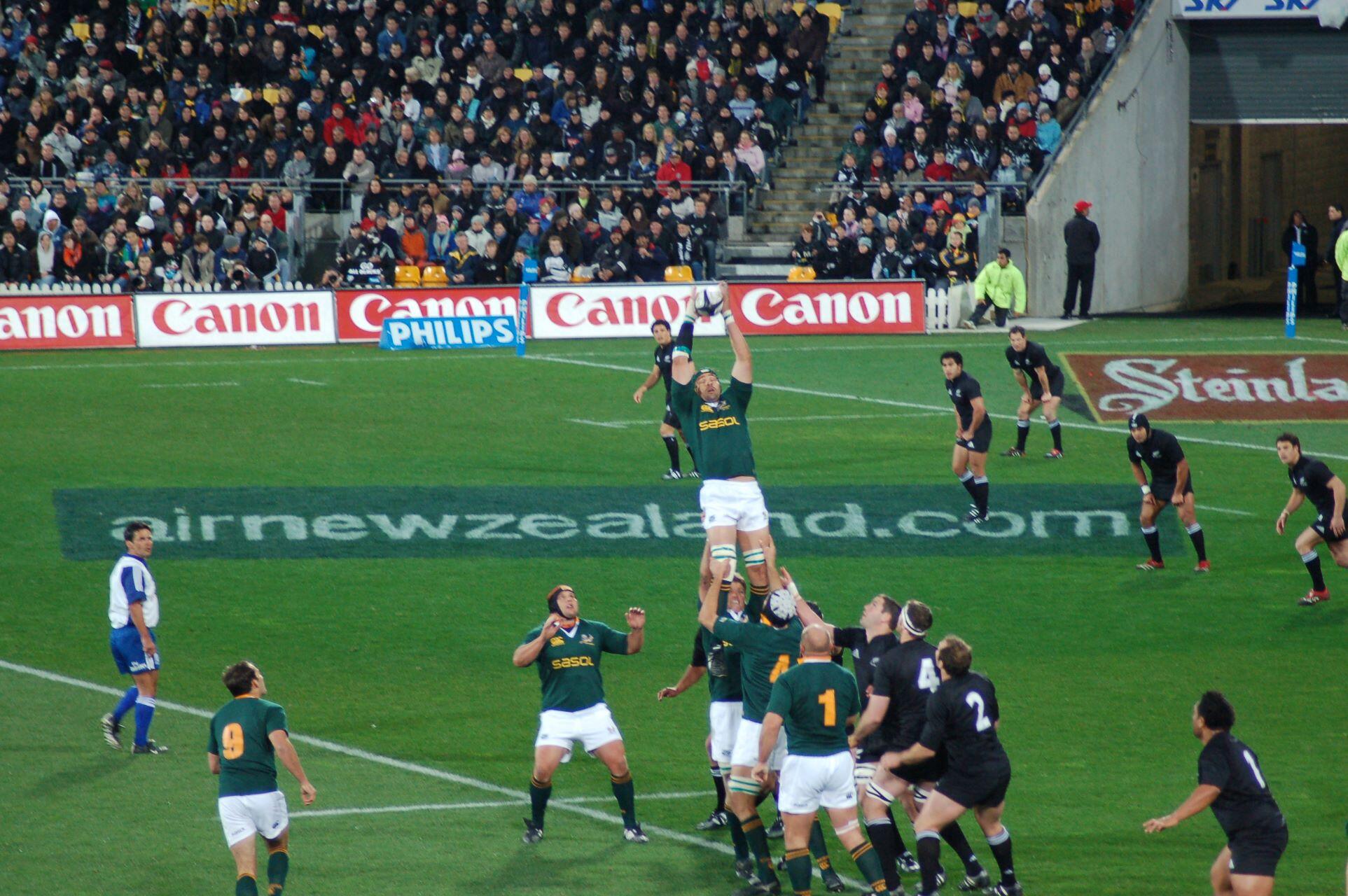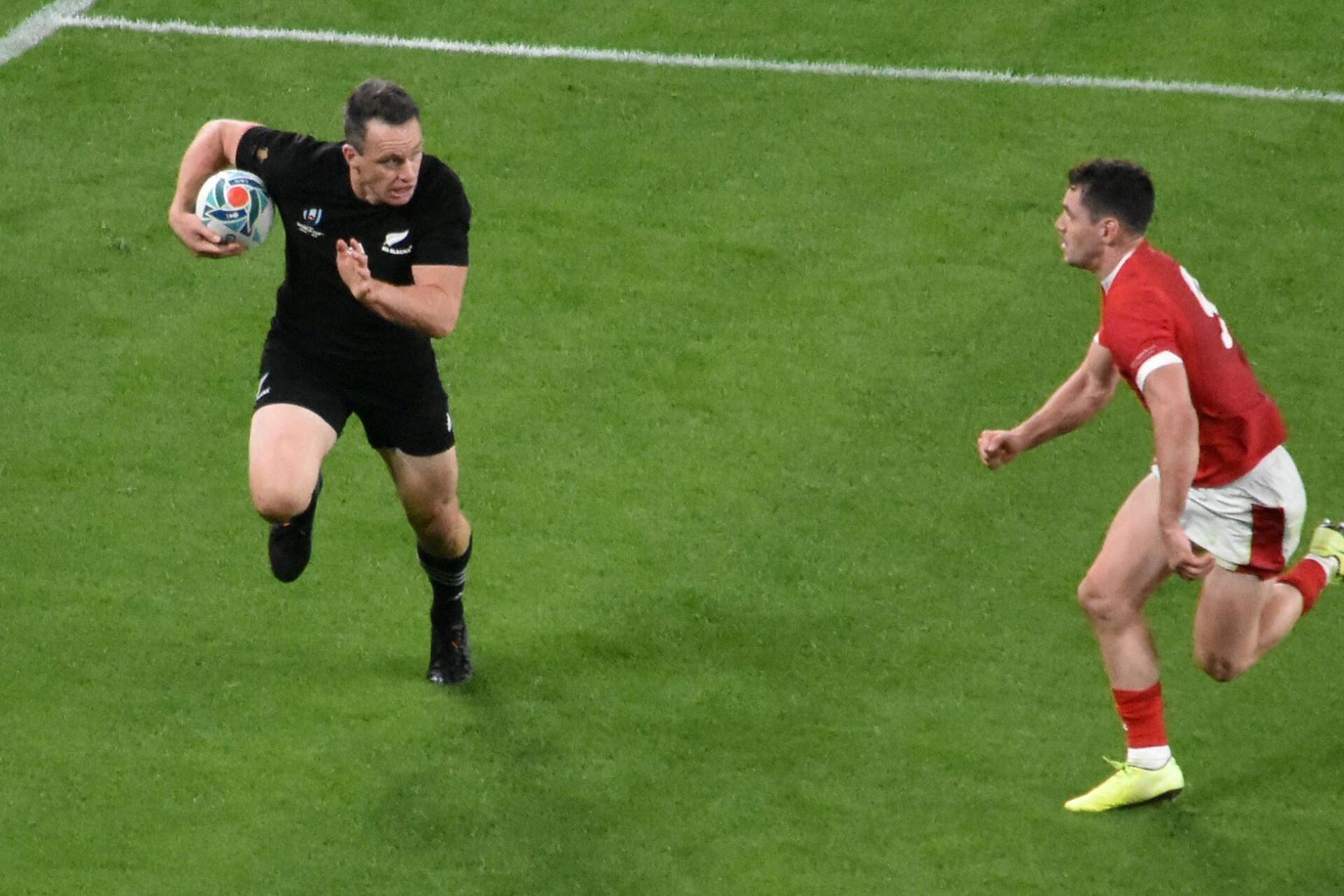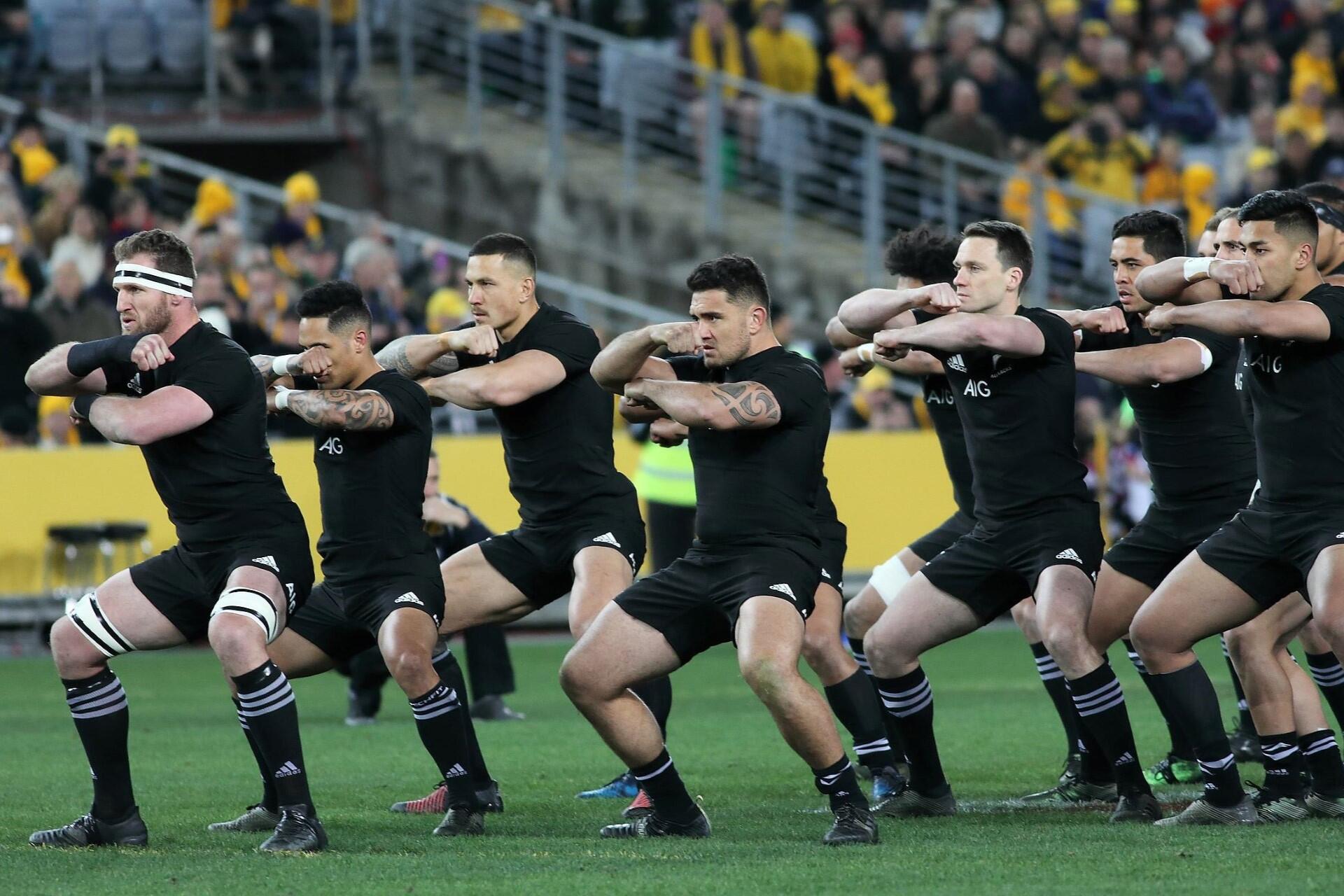The haka is a ceremonial dance and a massive part of Māori culture. It's recognised worldwide predominantly for its use by the New Zealand All Blacks rugby team, one of the finest in the world.
The first time the All Blacks performed the Ka Mate haka in 1905, it became a defining part of their pre-match ritual. It was a display of the intensity with which they intended to play, and it also showcased Māori heritage on the global stage.
The haka has evolved throughout the years, with the Kapa o Pango haka introduced in 2005. Today, we'll look at the haka's origins, its use by the All Blacks, and the differences between the various haka.

The Origins of the Haka and Its Cultural Roots
The haka is a traditional ceremonial Māori dance with deep historical and cultural significance within Aotearoa (New Zealand). It is famous for its synchronised movements, rhythmic chanting, and intense facial expressions, such as the pūkana (eye-widening) and whētero (tongue protrusion).
The haka isn't just a display of physical prowess, though. Instead, it's a powerful form of storytelling, spiritual expression, and unity!
Historically, the haka was performed by Māori warriors before a battle. It was used to intimidate opponents, rally warriors, and invoke ancestral strength. The movements and chants recount tribal stories, whakapapa (genealogies), and significant events. The haka was essentially a vessel for preserving Māori history and values.
Ka Mate: The Original Haka
Ka Mate is probably one of the best-known hakas. It was composed around 1820 by Ngāti Toa chief Te Rauparaha. This haka tells the story of Te Rauparaha's survival and triumph following capture.
The haka originated not just as a war dance but as a form of cultural expression, storytelling, and spiritual connection.
While the haka is deeply spiritual and ceremonial, its inclusion before All Blacks rugby matches has helped share and showcase Māori culture worldwide.
The All Blacks and the Historical Use of the Haka
The New Zealand All Blacks rugby team is synonymous with the haka. Its players have used it for over a century as a pre-match ritual. The haka is a powerful display of the country's cultural heritage and a hallmark of its identity, a global symbol of Māori tradition and unity.

The First Use of the Haka in Rugby
The first performance of the Ka Mate haka was during the All Blacks' 1905 tour of the British Isles. The "Original All Blacks" tour was likely the first time a Māori cultural practice was used on an international stage.
A fine example of New Zealand's cultural identity and competitive sportsmanship, it was originally only performed during overseas tours. Still, by the 1980s, it was performed in all test matches.
The Haka as a Pre-Match Ritual
Today, the haka is performed before every All Blacks test match. In addition to the traditional purposes from Māori culture, it also serves several key purposes in this sporting context:
- Mental Preparation: The haka energises and unites the players before the match.
- Cultural Representation: It showcases Māori heritage on a global platform.
- Intimidation: The fierce expressions and synchronised movements create an imposing display of strength and unity.
Key Dates
- 1905: First performance of the Ka Mate haka on tour.
- 1987: Haka becomes a standard pre-match tradition in all test matches.
- 2005: Introduction of the modern haka Kapa o Pango.
The haka has become more than a pre-match ritual for the All Blacks—it's a cultural statement, a challenge, and a symbol of national pride.
The use of the haka in All Blacks matches is known by almost every rugby fan, making it an important tradition for any player to represent the team.


Ka Mate vs. Kapa o Pango: The Two All Blacks Hakas
The All Blacks perform two hakas before their rugby matches: the original Ka Mate haka or the newer Kapa o Pango haka.
Each of the two hakas carries historical and cultural significance and represents different aspects of Māori heritage.
Ka Mate: The Traditional Haka
As mentioned above, Ka Mate is the original haka performed by the All Blacks since 1905.
The words in this haka celebrate overcoming fear and the celebration of life after Te Rauparaha narrowly escaped death.
Key Lines from Ka Mate
- "Ka mate, ka mate! Ka ora, ka ora!" (It is death, it is death! It is life, it is life!)
- "Tēnei te tangata pūhuruhuru…" (Here stands the hairy man…)
Cultural Meaning
- Represents overcoming challenges.
- Historically, it is a personal chant of Te Rauparaha but adopted as a broader symbol of strength and resilience.
- Often associated with Māori pride and identity.
Kapa o Pango: The Modern Haka
The All Blacks introduced their second haka in 2005. Kapa o Pango (“Team in Black”) was composed by Derek Lardelli of Ngāti Porou.
As you can imagine, this haka was created specifically for the All Blacks. It reflects the team's modern identity while also paying tribute to Māori culture.
Key Lines from Kapa o Pango
- "Kapa o Pango, kia whakawhenua au i ahau!" (Team in Black, let me become one with the land!)
- "Ko Aotearoa e ngunguru nei!" (This is New Zealand roaring now!)
Cultural Meaning
- Focuses on unity, land, and national pride.
- Honors Aotearoa (New Zealand) as a whole, not just a historical figure.
- Acknowledges the power of the team representing the nation.
If you find hakas fascinating, you may also be interested in pōwhiri, traditional welcoming ceremonies.
Key Differences Between Ka Mate and Kapa o Pango
When performed by the All Blacks, these two hakas powerfully demonstrate the team's competitive spirit while also making a cultural statement about New Zealand and its identity.
Speaking of competition. Have you heard of Te Matatini, a key Māori performing arts festival?
| Aspect | Ka Mate | Kapa o Pango |
|---|---|---|
| Origin | Composed by Te Rauparaha | Composed by Derek Lardelli |
| Introduced to All Blacks | 1905 | 2005 |
| Theme | Survival and triumph | Team pride and national unity |
| Use | Traditional, historical haka | Modern, used for special matches |
| Signature Move | No gesture controversy | Throat-slitting gesture (later modified) |
While both hakas are powerful expressions of strength and identity, Kapa o Pango was designed to give the All Blacks a haka unique to their modern legacy.
Cultural Significance and Global Impact of the Haka
The haka has become synonymous with the All Blacks but transcended the rugby world. It's now a global symbol of Māori culture.
Originating from Māori culture, the All Blacks' use of the haka has given this powerful expression of identity a platform on the international stage.
The haka is easily one of the most recognisable things in rugby, even by those who don't follow the sport that closely.
Preserving Māori Heritage on a Global Sporting Stage
The performance of the haka, which the All Blacks do before every match, is a way for the team to pay homage to the Māori culture and the traditions of Aotearoa (New Zealand).
By including haka in international rugby matches, millions can see examples of Māori storytelling and expression.

How the Haka Preserves Māori Culture
- Promotes the use of te reo Māori (the Māori language) through chants.
- Educates global audiences about Māori traditions and symbolism.
- Reinforces the importance of whakapapa (ancestral ties) and tribal identity.
The All Blacks’ haka showcases the beauty and strength of Māori culture, serving as both a challenge and a lesson in cultural history.
The Haka as a Symbol of Unity and Team Identity
The haka is more than just a pre-match spectacle performed by those playing for the All Blacks. It's a team-building ritual that fosters a deep sense of whanaungatanga (kinship) among the players to be honoured to play for the team.
By performing the haka together, the team can express unity, mutual respect, and collective strength, which the All Blacks have had throughout their history.
How the Haka Unites the Team
- Promotes team spirit and emotional preparation.
- Encourages respect for Māori values of mana (honour) and tapu (sacredness).
- Symbolises the collective strength of Aotearoa, not just the rugby squad.
Respect and Cultural Authenticity
Since the haka is an important and sacred Māori tradition, its use within the sporting context of the All Blacks rugby matches is often (and fairly) questioned.
Cultural appropriation is naturally a potential issue, which is why the All Blacks have taken significant steps to ensure that every haka is performed with respect and authenticity.
How the All Blacks Perform the Haka with Cultural Respect
- Consultation with Māori elders and cultural experts before introducing Kapa o Pango.
- Educating players about the haka's origins and meanings.
- Maintaining te reo Māori language integrity during performances.
When performed respectfully, the haka is a profound way to share Māori culture while emphasising sportsmanship and unity.
Using the haka by the All Blacks can encourage conversations about Māori culture and the power of sport to preserve cultural traditions while celebrating identity.

Memorable All Blacks Haka Performances (with Videos)
The All Blacks have delivered some incredible performances of the haka throughout their history, with many preceding incredible victories for the teams.
Here are just a few fine examples of it.
Rugby World Cup Final – 2011 vs. France
As the All Blacks faced off against France, they performed the Kapa o Pango haka. They would win the match 8-7 and secure the tournament.
Though this said to be one of the greatest hakas ever, the world record for biggest haka was only recently returned to New Zealand after years of being held by France.
Rugby World Cup Semi-Final – 2019 vs. England (V-Formation Response)
In the 2019 Rugby World Cup, the All Blacks performed the Ka Mate against England in the semi-final.
England's response by forming a V-shape created a dramatic moment that sparked debate worldwide.
Tribute Haka for Jonah Lomu – 2015
After the passing of All Blacks legend Jonah Lomu, the teams' touching haka at his funeral was deeply emotional.
The important things about these hakas are that they are:
- Culturally Grounded: Honouring Māori traditions with authenticity.
- Emotionally Charged: Creating unforgettable moments in rugby history.
- Symbolic: Expressing unity, defiance, and respect for the game and opponents.
The All Blacks’ haka performances have become legendary moments that blend culture, emotion, and sportsmanship on a global stage.















